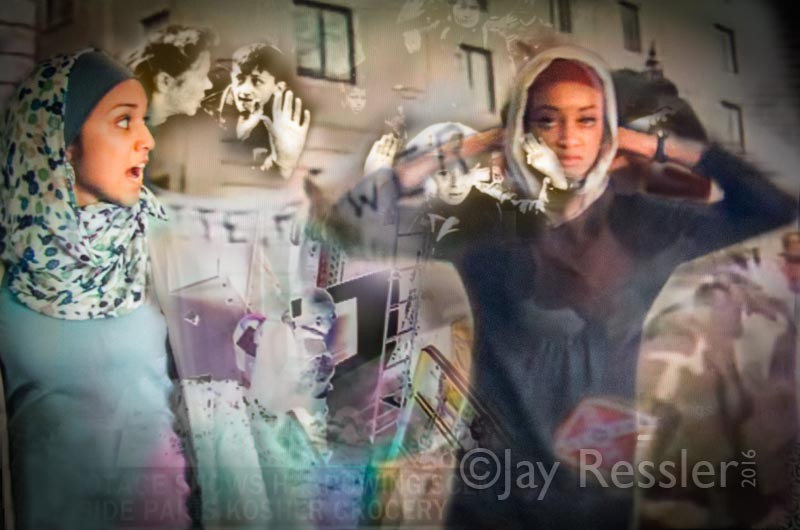Amphisbaena: Islamophobia and Antisemitism
In ancient Greek mythology Amphisbaena is a two-headed serpent. Islamophobia and anti-Semitism are two sides of an evil demon of hate lurking close to the surface. In the current political climate one pokes its head out tentatively at first, then ever more aggressively. Where Islamophobia is openly expressed one day, racist and anti-Semitic violence are sure to follow.
The two women in the foreground are from a scene in “Mooz-Lum,” in which the Muslim youth are about to be attacked by racist thugs. The young woman on right is preparing to surrender by removing her head scarf, echoing the background picture of eight-year old Jewish boy surrendering to Nazi storm troopers in the Warsaw ghetto of Poland, in 1943.
Also in the background is news footage of a “white power” demonstration led by Frazier Glenn Miller, whose camouflage jacket and head are partially visible. Miller is a Missouri Klan leader and FBI informant who gunned down three people at a Jewish Community Center in Lakeland, Kansas, in 2014. Inset in bottom foreground is security footage from inside the store which was the scene of anti-Semitic attack on a Parisian Kosher market by ISIS terrorists in 2015 in the aftermath of the Charlie Hebdo massacre. While Islamophobia has gained recent traction spurred on by demagoguery of a few American politicians and widespread intolerance in Europe in response to the refugee/immigration crisis and several highly publicized terrorist attacks., anti-Semitic violence, though still at historically low levels, has also been on the rise in the past couple of years according to the Anti-Defamation League. Anti-Semitism has manifested itself not just on the political right, but alarmingly also emerged among some student and left-wing activists in recent months.

